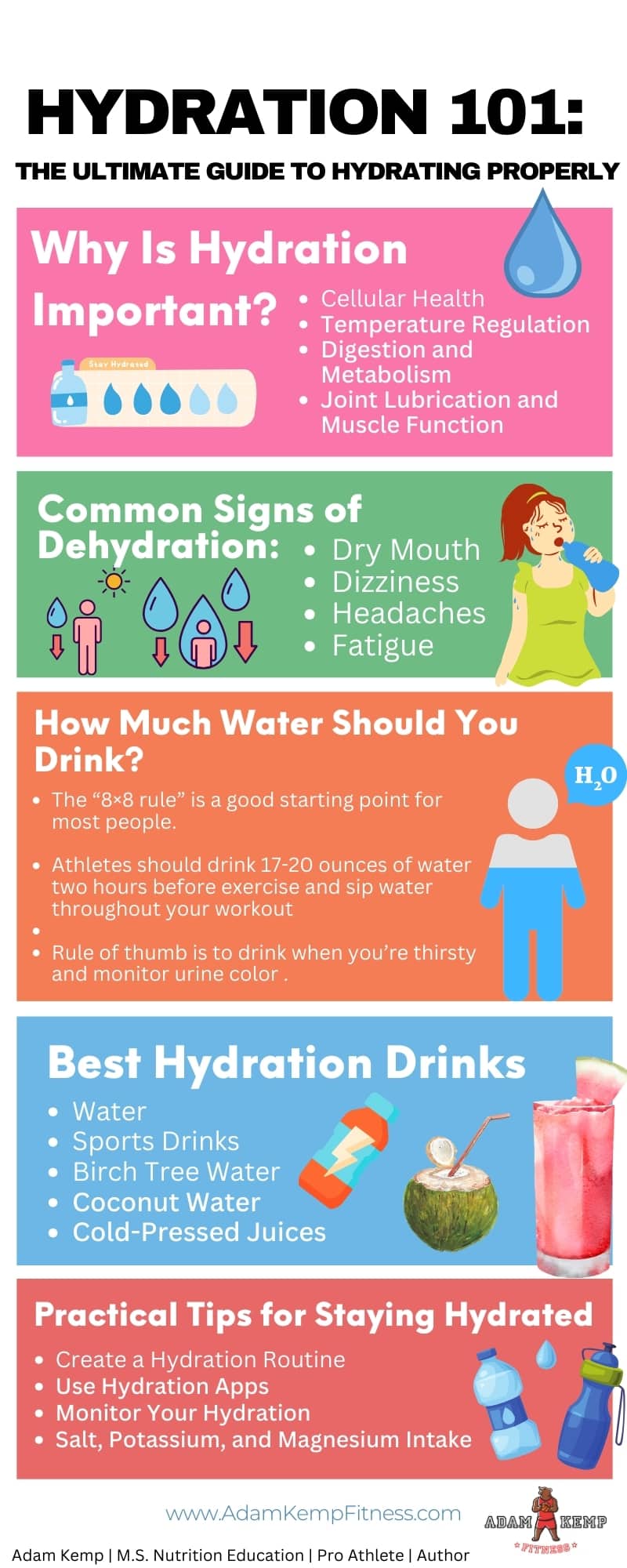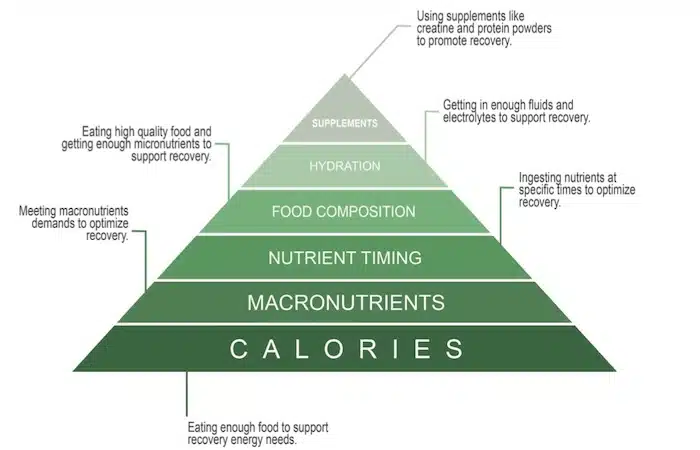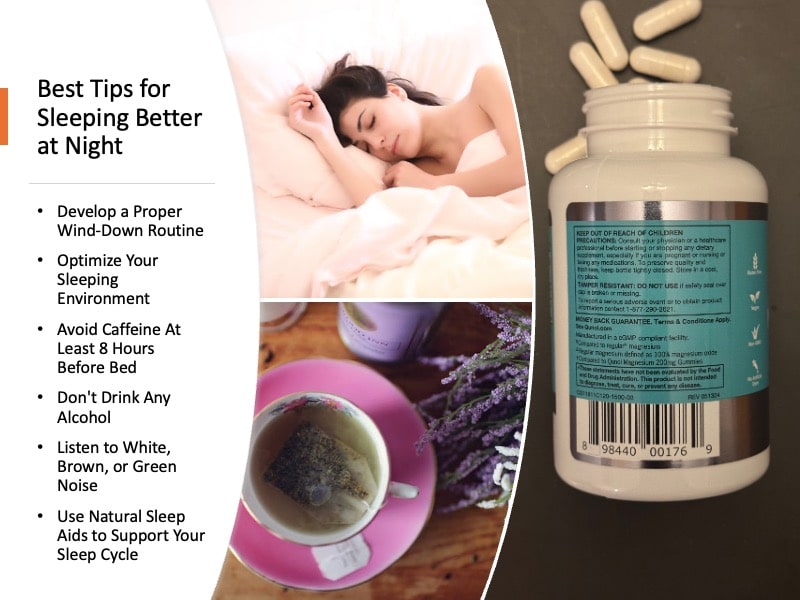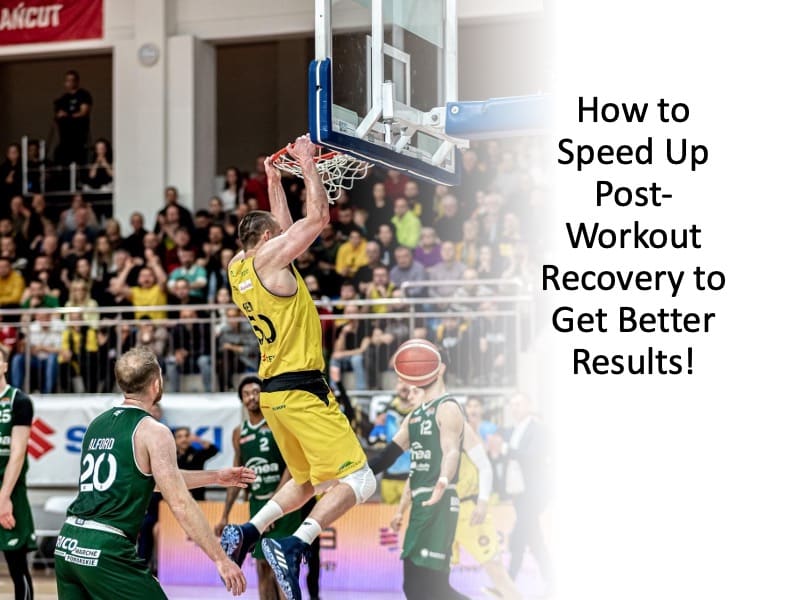The Best Post-Workout Recovery Tips to Get Better Results!
If you’re serious about improving athletic performance, building lean muscle, or simply staying consistent with your training, optimizing your post-workout recovery is non-negotiable.
As a professional basketball player with over a decade of international experience and a Master’s Degree in Nutrition Education, I’ve learned that recovery isn’t just about resting and waiting, it’s a strategic process involving science-backed methods to reduce muscle soreness, accelerate tissue repair, and improve training outcomes.
Whether you’re an elite athlete or a dedicated gym-goer, what you do after a workout directly influences how your body adapts and progresses.
This guide breaks down the best post-workout recovery tips based on what has worked for me throughout my career and what current sports science confirms as essential for reducing fatigue, boosting muscle recovery, and preventing injury.
From the first minutes after training to the days that follow, these strategies will help you recover faster after exercise and train harder the next time you go for a workout!
What Is Post-Workout Recovery?
Post-workout recovery refers to the series of biological and behavioral processes your body undergoes to repair muscles, restore energy, reduce inflammation, and prepare for your next training session.
Every workout places stress on your muscles, joints, and nervous system. As you train, microscopic muscle damage and metabolic fatigue accumulate. Effective post-workout recovery techniques—including rest, proper nutrition, hydration, stretching, and sleep—help reverse that damage and improve your physical resilience.
Without recovery, your progress plateaus. With it, you build strength, improve performance, and reduce the risk of overtraining or injury.
Why is Post-Workout Recovery Important?
Effective post-workout recovery is the foundation of progress in your fitness journey.
When you exercise, muscles undergo microtrauma or tiny tears.
While this is a natural part of building strength and endurance, your muscles need adequate recovery to repair and grow stronger (Ivy, 2004),
- Failure to recover properly can lead to chronic soreness, fatigue, and even injuries that might set you back.
- Focusing on post-workout recovery can help you improve muscle recovery speed, reduce soreness, and prepare your body for the next workout session.
Essential Aspects of Post-Workout Recovery
Before diving into specific post-workout recovery techniques, it’s important to establish the foundational habits that will consistently support your recovery process.
These core practices are essential for maintaining long-term health, preventing injuries, and optimizing your overall performance.
By focusing on consistency, monitoring your body’s signals, and maintaining proper nutrition, you’ll build a strong recovery framework that allows you to get the most out of every workout.
Here are the three key habits you need to always prioritize for effective recovery.
Stay Consistent
Consistency is key when it comes to recovery. Regularly incorporating practices like foam rolling, stretching, proper hydration, and balanced nutrition into your routine will help maximize muscle repair, reduce soreness, and prevent injuries over time.
By making recovery a habit, you allow your body to adapt and improve, which leads to better long-term performance and gains.
Monitor Your Body for Signs of Overtraining
Pay close attention to how your body feels after consecutive workouts. Signs of overtraining—such as persistent fatigue, decreased performance, or irritability—indicate that your body isn’t getting enough time to recover.
Overtraining can lead to muscle strain, injuries, and mental burnout.
Make sure to schedule rest days and listen to your body’s signals to ensure you’re giving it the recovery time it needs to stay healthy and avoid setbacks.
Most Effective Post-Workout Recovery Techniques
Once you’ve built a solid foundation of recovery habits, it’s time to implement the most effective post-workout recovery techniques to accelerate muscle repair and improve your performance.
These science-backed recovery tips are designed to reduce muscle soreness, replenish energy stores, and help your body bounce back stronger after each workout.
From the critical 30-minute recovery window to strategies that support you hours and even days after training, these post-workout recovery tips will help you feel better, train harder, and make consistent progress in your fitness journey.
Post-Workout Recovery Tips for 1-2 Hours After a Workout
After an intense workout, your body is primed for recovery, and what you do in the minutes following exercise can significantly impact how quickly your muscles repair and grow.
- Understanding what to do after a workout is crucial for optimizing recovery and setting the stage for your next training session.
- By focusing on rehydration, proper nutrition, and muscle care within the first 30 minutes, you can jumpstart your body’s healing process and reduce soreness.
Rehydrate
Hydration is one of the most essential post-workout recovery techniques, especially within the first few hours after training.
After intense exercise, your body is often in a state of dehydration, having lost fluid and electrolytes through sweat, which can delay muscle repair and prolong fatigue if not properly addressed.
Drinking water consistently after your workout supports nutrient delivery to muscles, aids in flushing out metabolic byproducts, and helps restore internal fluid balance.
For optimal results, pair your water intake with electrolyte-rich options to replenish key minerals like sodium, potassium, and magnesium that are depleted during exercise.
While water should always be your base, some of the best sports drinks, like Gatorade Fit and Prime Hydration, can further accelerate recovery by restoring mineral balance and supporting rehydration at the cellular level.
Make it a habit to drink fluids steadily over the next several hours post-workout, not just right after you train.
This ensures your body stays hydrated throughout the full recovery window and continues to perform at its best.
For more information, please check out my Hydration Tips for Athletes article.
Make a Post-Workout Smoothie
One of the most effective post-workout recovery tips is making a nutrient-dense post-workout smoothie to jumpstart muscle repair and replenish energy.
Smoothies are quick, easy to digest, and perfect for combining key recovery nutrients like protein, carbohydrates, micronutrients, and anti-inflammatory compounds into one powerful drink.
Protein powder supplements are great for supporting muscle repair after exercise, but combining them with carbohydrates, healthy fats, and micronutrients makes a huge difference in how effectively your body recovers.
That’s why post-workout smoothies are one of my go-to strategies.
While pre-made protein shakes like OWYN offer a convenient option by combining plant-based protein with additional nutrients, making your own smoothie gives you full control over the ingredients and nutrient balance.
Additionally, you can combine a couple of the best supplements for muscle recovery into your smoothie to set the stage for optimal recovery while improving overall health and performance.
By pairing high-quality protein with glycogen-restoring carbs, inflammation-fighting fats, and recovery-enhancing compounds, you’ll optimize your results and bounce back faster after every workout.
Protein: Start with 20–30 grams of protein to stimulate muscle repair.
I recommend Garden of Life Protein & Greens, a plant-based powder that also provides fiber, probiotics, and digestive enzymes. You can boost the protein content by adding Greek yogurt, almond butter, or hemp seeds.
Last update on 2025-04-15 / This article includes affiliate links/Images via Amazon Product Advertising API. I may earn commissions on purchases made through these links.
Carbohydrates: Next, add 40–60 grams of carbohydrates to restore glycogen. Bananas, oats, berries, raw honey, or even cooked sweet potatoes offer an ideal mix of fast and slow-digesting carbs.
Pairing carbohydrates with protein helps reduce post-exercise soreness and supports energy recovery.
To elevate the micronutrient profile, include a superfood supplement or greens powder like Bloom Greens & Superfoods, which delivers antioxidants, vitamins, minerals, and probiotics for reduced inflammation and improved nutrient absorption.
For extra immune support and faster recovery, try a bovine colostrum supplement like Force Factor Colostrum.
Colostrum supplements provide growth factors and antibodies that enhance muscle regeneration and gut health.
Last update on 2025-04-15 / This article includes affiliate links/Images via Amazon Product Advertising API. I may earn commissions on purchases made through these links.
Sample Post-Workout Smoothie Recipe
- 1 scoop Garden of Life Protein & Greens
- 1 banana
- ½ cup oats
- 1 serving Bloom Greens & Superfoods
- 1 serving Force Factor Colostrum
- 1 cup almond milk or coconut water
- Optional: spinach, almond butter, hemp seeds
Blend until smooth and enjoy within 30–60 minutes post-exercise for optimal recovery.
You can get a travel blender for on-the-go post-workout smoothies or I suggest a Nutribullet Pro+ for powerful blending at home.
Last update on 2025-04-15 / This article includes affiliate links/Images via Amazon Product Advertising API. I may earn commissions on purchases made through these links.
Post-Workout Recovery Techniques for the 3-12 Hours After a Workout
As your body continues to recover in the hours following a workout, the focus shifts to maintaining the momentum of muscle repair and replenishment.
The period between 3-12 hours after exercise is crucial for ongoing recovery, as your body works to heal tissues, reduce inflammation, and restore energy levels.
During this time, incorporating low-intensity activities and optimizing your nutrient intake can help speed up recovery, reduce muscle soreness, and prepare you for your next training session.
Here are some key tactics to keep your recovery on track during this phase.
The first two to three hours after a workout is critical for maximizing recovery and preparing for long-term gains.
- During this time, your body is working hard to repair muscle fibers, replenish glycogen stores, and reduce inflammation.
- What you do during this period can have a significant impact on how well and how quickly you recover.
- By focusing on proper nutrition, hydration, and other recovery techniques, you can enhance muscle repair, reduce soreness, and prepare your body for future workouts.
Foam Rolling, Stretching, and Myofascial Release
In the hours after a workout, foam rolling, stretching, and other forms myofascial release can help preparre your body recover from your previous workout and prepare for the next.
Foam rolling breaks down muscle adhesions, promotes blood flow, and helps prevent delayed onset muscle soreness (DOMS).
Combining foam rolling with stretching and mobility exercises not only helps you speed up muscle recovery after workouts but also improves flexibility and joint range of motion, setting a solid foundation for the rest of your post-workout routine (McHugh & Cosgrave, 2010).
In addition to foam rolling, self-massage tools like percussive massage guns offer a convenient and effective way to enhance post-workout recovery.
The Theragun helps break down muscle adhesions, improve blood flow, and reduce muscle soreness.
Its portability makes it easy to use at home or in the gym, allowing you to target tight muscles and accelerate recovery without needing a foam roller.
For more information, check out the comprehensive resource I wrote that covers techniques, tips, and best practices for maximizing the benefits of foam rolling and how to use a foam roller effectively to improve recovery and flexibility.
Continue Rehydration
While hydration immediately after exercise is critical, continuing to rehydrate over the next several hours is just as important for full recovery.
During the 3–12 hours post-workout window, your body is still repairing tissues, balancing electrolytes, and clearing metabolic waste. Drinking water consistently during this period helps sustain circulation, aids nutrient transport to muscles, and supports joint lubrication and cognitive function.
In addition to water, consider replenishing electrolytes, especially if your workout was long, intense, or sweat-heavy.
Sodium, potassium, magnesium, and calcium all play vital roles in muscular function, nerve signaling, and hydration status.
You can get these through natural sources like coconut water, mineral-rich fruits and vegetables, or an electrolyte drink without added sugar.
My favorite electrolyte drink is Celsius Hydration packets.
Last update on 2025-04-15 / This article includes affiliate links/Images via Amazon Product Advertising API. I may earn commissions on purchases made through these links.
Aim to drink fluids regularly throughout your recovery period, not just when you feel thirsty.
A good rule of thumb is to consume at least 16–24 ounces of fluid for every pound of body weight lost through sweat, and to watch for signs of dehydration such as dark urine or fatigue.
Proper hydration during this window improves muscle recovery, prevents cramping, and helps keep your energy levels steady as your body restores itself from training.

Consume a Balanced Meal
Within 2-3 hours of finishing your workout, it’s important to consume a balanced meal to support muscle recovery.
- Focus on lean proteins, complex carbohydrates, and healthy fats.
- Protein is essential for muscle repair, carbs restore energy levels, and fats help reduce inflammation.
- Examples include grilled chicken with sweet potatoes and avocado or a plant-based protein option with quinoa and veggies.
Engage in Active Recovery
Active recovery involves low-intensity exercises like walking, swimming, or light cycling.
This promotes blood flow, which delivers nutrients and oxygen to muscles, aiding in the removal of waste products like lactic acid.
Active recovery can help reduce muscle soreness and stiffness while preventing overtraining.
Stretching after exercise is essential to enhance flexibility and reduce muscle stiffness.
- Dynamic stretches—movements that keep your muscles active while elongating them—are particularly helpful for cooling down and maintaining mobility.
- Stretching can also reduce the risk of injury in future workouts by promoting better muscle alignment and function.
Use Cold Therapy or Contrast Showers
Cold therapy, such as ice baths or contrast showers (alternating between hot and cold water), is an effective way to reduce inflammation and muscle soreness.
This method helps constrict and dilate blood vessels, improving circulation and speeding up recovery.
Cold therapy has been found to reduce muscle swelling and minimize the effects of intense exercise.
However, I don’t suggest regularly using cold therapy or contrast showers when you are recovering from weightlifting, as cold exposure can blunt some of the beneficial inflammation and reduce beneficial adaptations like muscle grwoth and strength development.
If you are doing a lot of cardio workouts and want recovery from that, frequent cold exposure can be more beneficial.
Wear Compression Garments
Compression clothing can aid recovery by improving circulation and reducing muscle soreness.
Studies have shown that wearing compression garments after exercise can decrease muscle damage and enhance recovery by increasing blood flow to the affected areas, thereby reducing inflammation and swelling .
Long-Term Post-Workout Recovery Tips (Following Day(s) After Workout)
Long-term recovery plays a vital role in ensuring your body fully heals and adapts to the demands of your workouts.
While immediate post-workout strategies are important, what you do in the days following a workout can significantly influence your overall progress and prevent injury.
Proper rest and nutrition during this period help your muscles rebuild and grow stronger while also allowing you to maintain peak performance over time.
Implementing these long-term post-workout recovery tips ensures that your body stays healthy, resilient, and ready for future training.
Maintain a Balanced Nutrition Plan

Nutrition is one of the most important pillars of effective post-workout recovery.
After training, your body needs the right blend of macronutrients and micronutrients to rebuild muscle tissue, replenish energy stores, and reduce inflammation.
Start by focusing on lean protein sources like chicken, fish, eggs, Greek yogurt, or plant-based options like lentils and tofu.
Protein provides the amino acids necessary for muscle repair and growth.
Pair this with complex carbohydrates such as oats, sweet potatoes, quinoa, or fruit to restore glycogen levels, support hormone balance, and fuel recovery for your next workout.
Don’t overlook healthy dietary fats, especially anti-inflammatory options like omega-3 fatty acids.
Found in fatty fish (salmon, sardines), flaxseed, chia seeds, and walnuts, omega-3s help reduce muscle inflammation and soreness, speeding up the repair process (Mickleborough, 2013).
Finally, round out your diet with plenty of colorful fruits and vegetables to deliver the essential vitamins, minerals, and antioxidants your body needs for immune function, tissue healing, and metabolic efficiency.
The key is nutrient timing and consistency.
Eating balanced meals and recovery snacks throughout the day, not just immediately after training, ensures your muscles stay nourished, and your body remains primed for growth, repair, and performance.
Get Enough Quality Sleep

Sleep is one of the most crucial aspects of recovery.
During deep sleep, the body produces growth hormones that stimulate muscle repair and tissue regeneration.
Aim for 7-9 hours of uninterrupted sleep to maximize recovery.
A lack of sleep can lead to slower muscle repair, increased inflammation, and reduced performance.
For more information on getting enough sleep, check out my article on how to sleep better.
Final Thoughts: Keys to Incorporating the Best Post-Workout Recovery Tips into Your Routine
The best post-workout recovery tips are only effective when they become part of your regular routine, not just something you do when soreness kicks in.
Consistency, intentionality, and personalization are key.
From rehydrating and foam rolling to long-term strategies like quality sleep and nutrient timing, every action contributes to how well your body repairs, adapts and grows.
Whether you’re making a smoothie packed with protein and superfoods, using cold therapy to reduce inflammation, or simply taking time to stretch and rest, each of these post-workout recovery techniques plays a vital role in helping you feel better, train harder, and avoid burnout or injury.
Start small, stay consistent, and listen to your body.
When you commit to the recovery process just as much as you do your workouts, the results will speak for themselves.







